New England gets quite a bit of snow, and even if there’s no snow, it’s cold! Winter mushroom foraging in New England is not for everyone. There’s not much out there and it’s chilly endeavor to go looking.
It’s best to taper expectations if you live in any snowy winter wonderland. Yes, fungi are growing out there, but finding them takes tons of patience, a hardy temperament to deal with the cold, and a bit of luck. Most of the species that survive cold temperatures grow from wood or living trees. Thankfully, you don’t have to worry about digging through the snow in search of mushrooms. Mostly, you just need stay alert and keep looking around while out in the forests.
Fungi rarely emerge through frozen wood, so once it’s super cold or below freezing all day long, it’s unlikely new mushrooms will appear. If you get a mid-winter thaw or rain, that’s a good time to go out looking.
Check out our other seasonal guides for the region: Spring Mushroom Foraging in New England, Summer Mushroom Foraging in New England, and Fall Mushroom Foraging in New England.
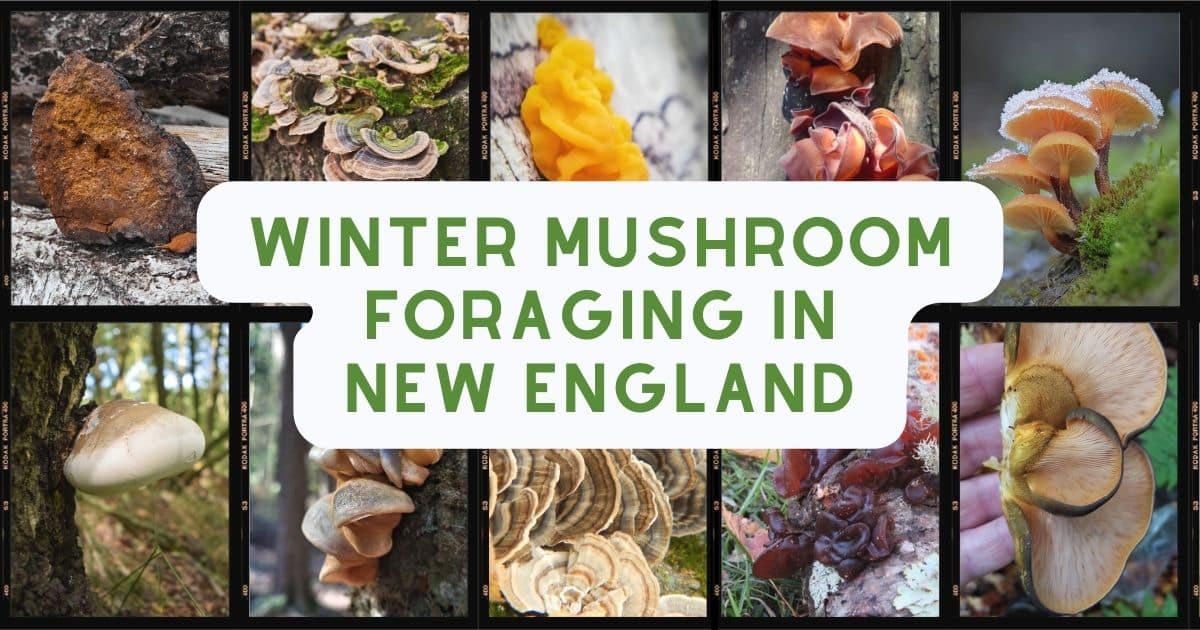
Winter Mushroom Foraging in New England
Chaga
Chaga grows primarily on birch trees and is gathered for its medicinal properties. It is said that chaga should always be foraged in winter because that’s when it’s at its peak medicinal form. Winter is also one of the best times to hunt it because there aren’t leaves or foliage blocking your view.
In winter, the tree is also dormant, so you don’t have to worry about damaging its growth as you harvest. But you still need to harvest the chaga responsibly and sustainably. Only take a small portion of the chaga, as it will continue to grow through the years if some is left behind.
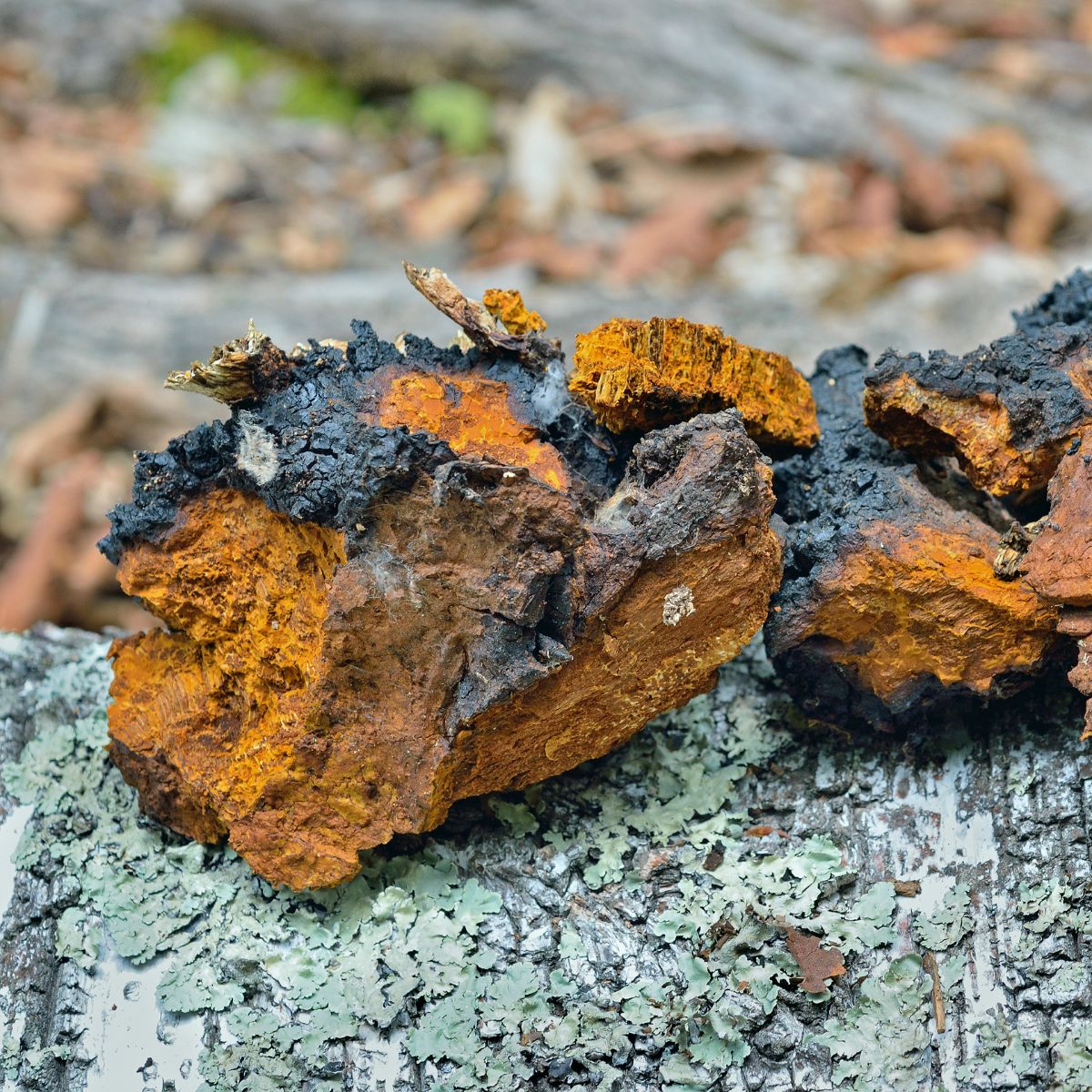
Turkey Tail
Turkey tail grows year-round and is a small bracket mushroom that remains viable for a long time. So, even if it’s not actively growing, you may find growth from earlier in the season that is still good to harvest. Turkey tail is collected for its medicinal properties, and it might be one of the few species you find on a deep winter walk. Make sure you brush up on what false turkey tail looks like and how to tell the difference — there are a lot of small, bracket polypores in the woods.
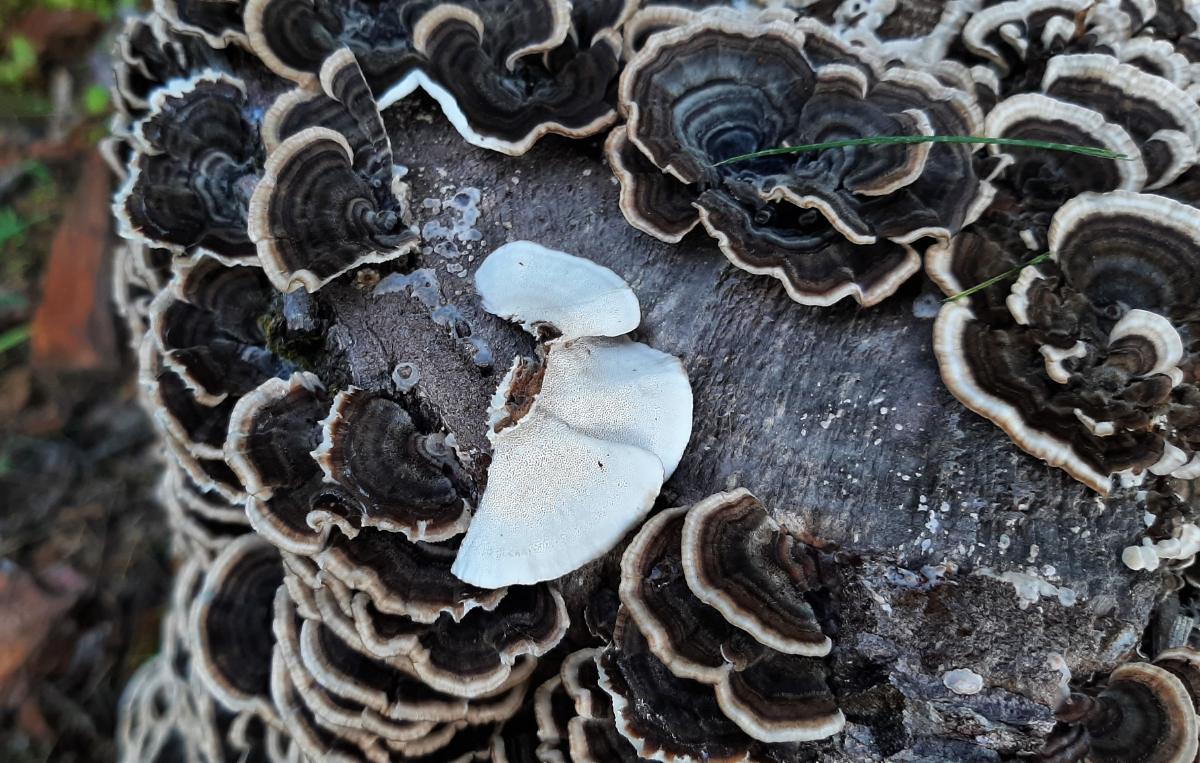
Witches’ Butter
The super bright orange to orange-yellow goopy, slimy fruiting bodies of witch’s butter are hard to miss. They really stand out since there’s not a whole lot of other color in the woods. Against a snowy backdrop, they really are noticeable. Witches butter isn’t a prime edible species; it’s jelly-like, small, and insubstantial all around. However, it is often found in large clusters and is abundant, so if you’re desperate, there it is. It does add a great texture to winter soups and stews. It’s worth a forage, at least once.
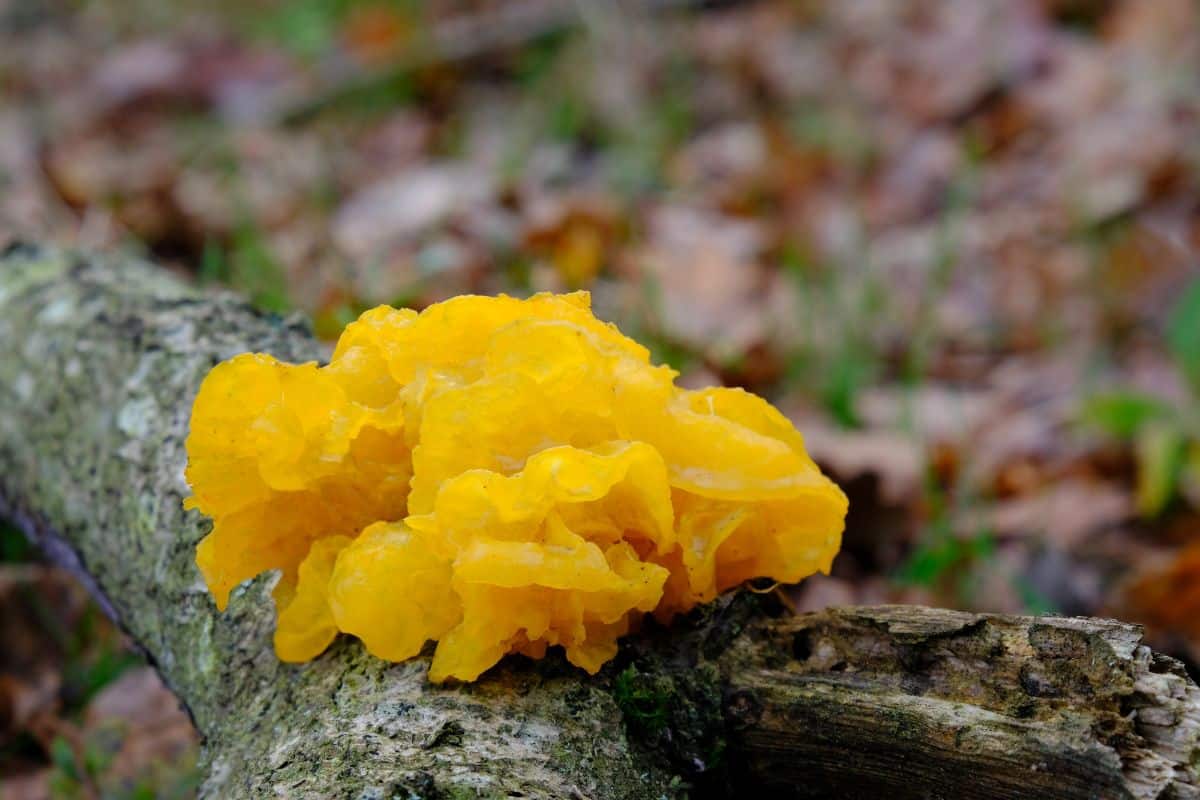
Velvet Foot Enoki
The velvet foot is literally known as “the winter mushroom.” It thrives in cold weather and it’s not uncommon to find them slightly frozen or under a thin layer of snow or ice. If you’ve ever had the supermarket enoki, you might be surprised to learn this is the exact same species. Cultivated enoki looks like a completely different mushroom. Be super careful when foraging wild enoki because it has a very dangerous lookalike.
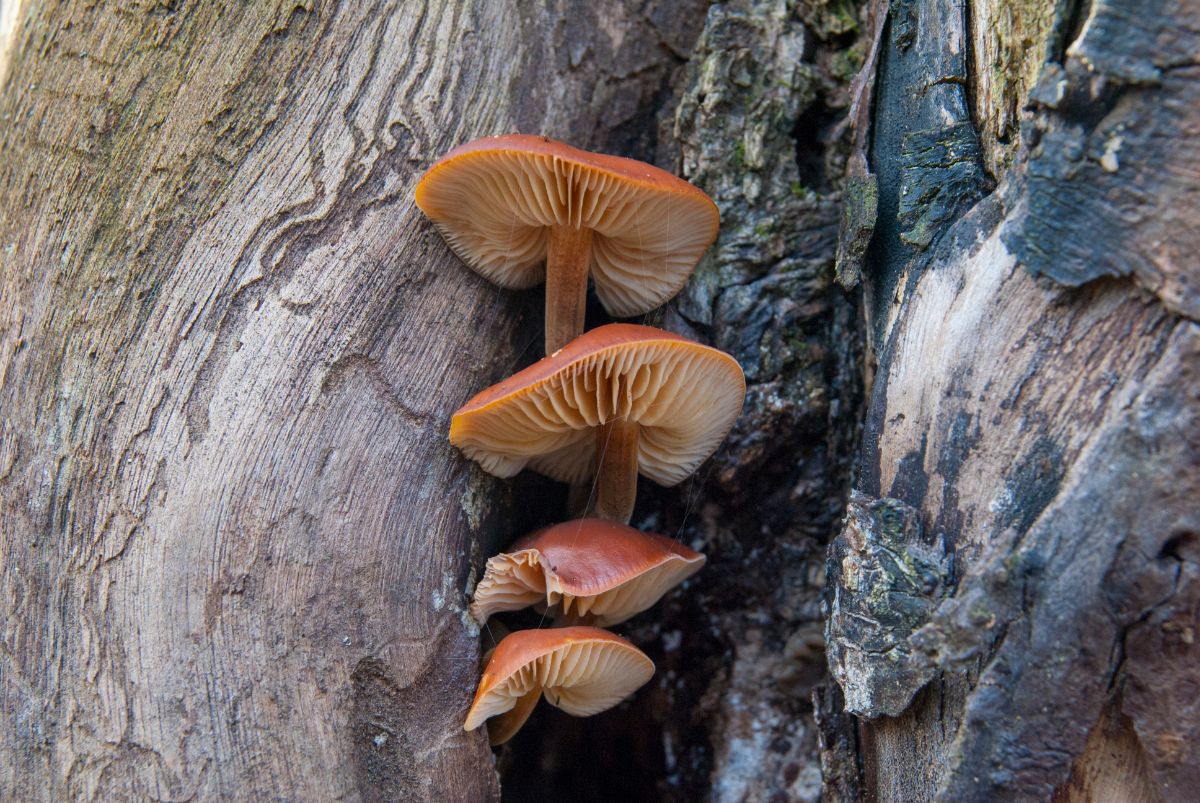
Wood Ear
Wood ear is a prized edible species, though it’s not for everyone. It is slightly rubbery but also chewy and crunchy at the same time. It’s a real treat added to a warming winter broth, like miso or chicken soup.
This is a brown, ear-shaped jelly fungus (it lives up to its common name!) that isn’t always easy to see since it blends in really well. Keep your eyes peeled for this one. Thankfully, wood ear mushrooms don’t deteriorate or decompose very quickly, so there’s a good chance of finding some excellent specimens.
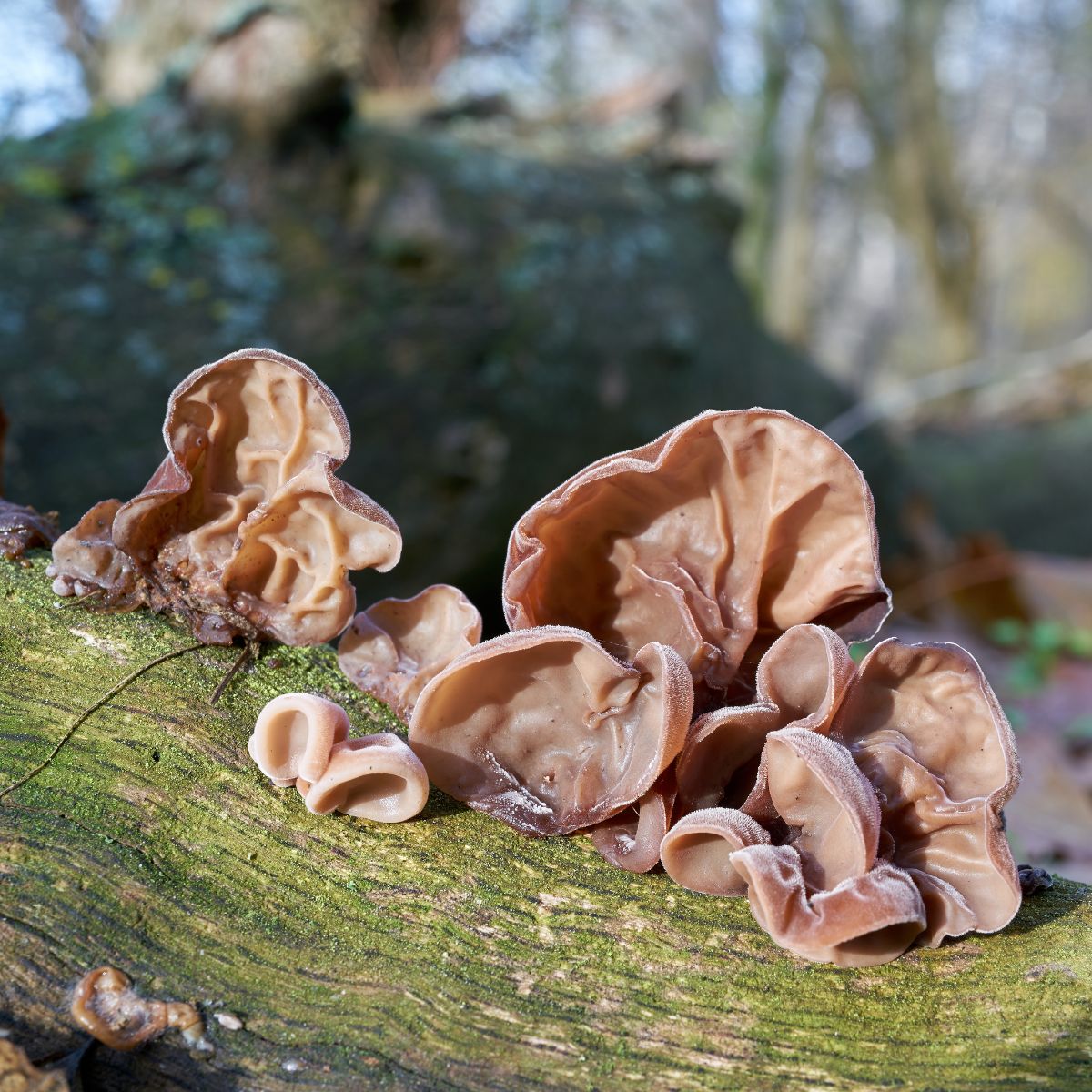
Birch Polypore
This birch tree fungus is an excellent medicinal species that is widespread throughout New England. It is common in winter because it is tough and doesn’t decompose very quickly. In the spring, new fruit bodies appear and then stay strong for as long as they can. The only downside to winter foraging of these is that you may find them too far gone. If they’re black or brown or look decaying, mark the spot and look earlier the following year. Birch polypores prefer dead and dying birch trees, so look for those trees that are struggling.
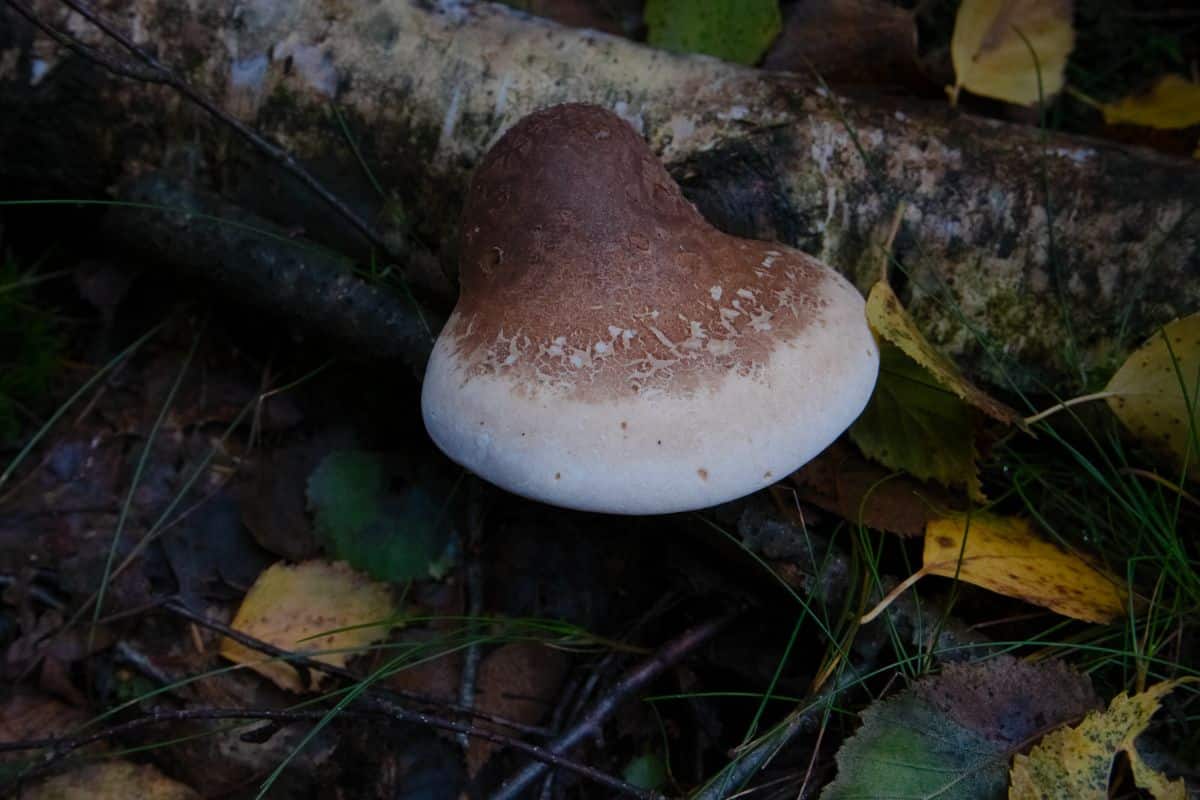
Late Fall Oysters
This greenish-yellow mushroom is not actually an oyster mushroom but it is super widespread and edible. It’s very hardy against the winter temperatures, fruiting when it’s cold (though not freezing). This forager found and foraged late fall oyster mushrooms off trees in Vermont in January! They were still fine, though almost completely frozen through. The freezing actually probably helped preserve them for so long.
Too much freezing and thawing will cause the mushrooms to deteriorate terribly, so it’s kind of a roll of the dice with this one. But, if you catch them just right, it’s a great, hearty mushroom find in the middle of winter. And they make the most fantastic mushroom jerky!
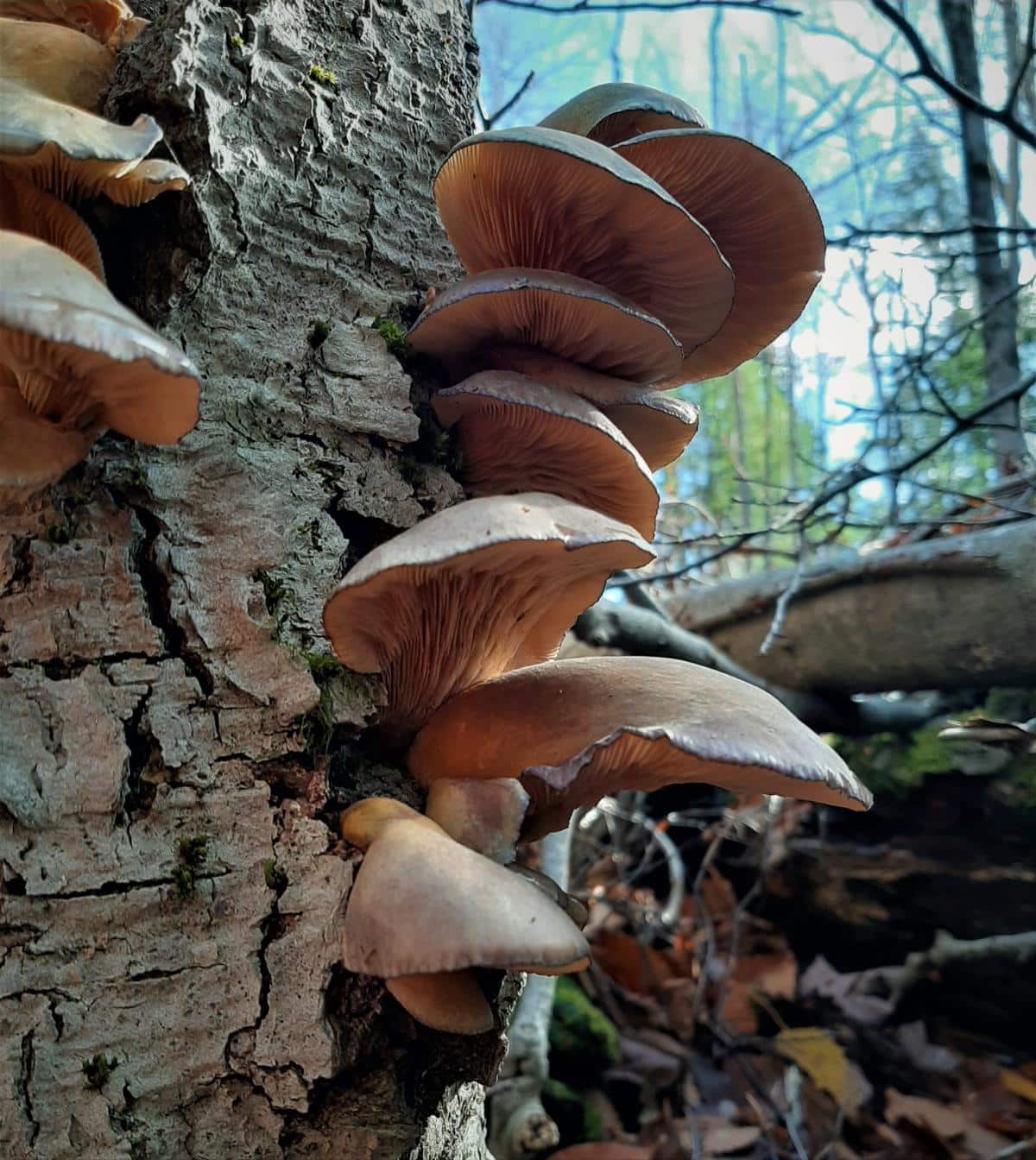
Amber Jelly Roll
This squishy, jelly-like brown fungus loves the cold. It’s not a top edible or even a middling edible, but it is common and widespread in New England woods. It’s not even a substantial species; you’d have to forage a bunch to make a meal out of these. But, it is entirely edible, so if you like trying new things, or it’s the end times and food is scarce, you can rest assured this species is good to forage. The brown coloring of the amber jelly roll blends right into the dead logs and branches it grows on, so it can be hard to spot.
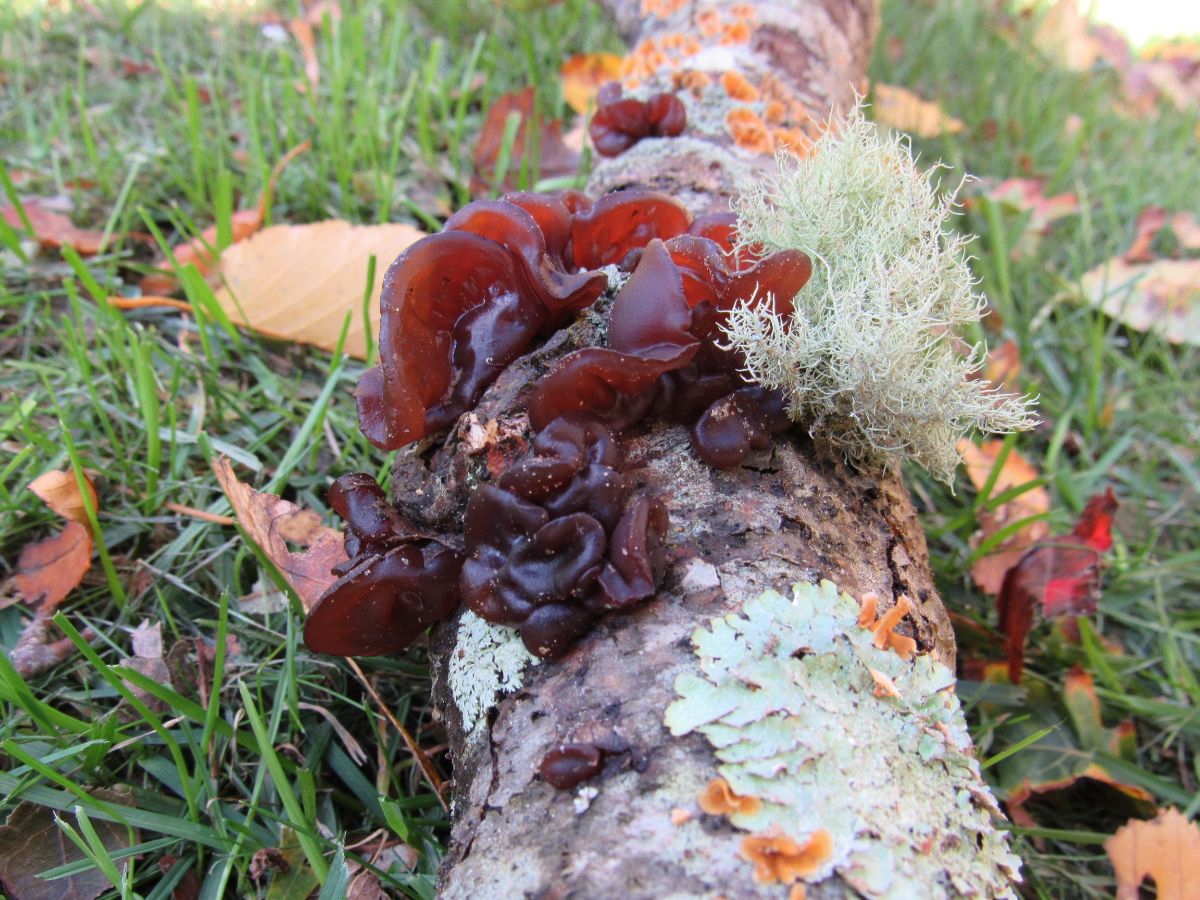
If you’re new to mushroom foraging, here are some great guides to get started: How To Be A Successful Mushroom Forager, Mushroom Foraging 101, and Mushroom Identification Pictures and Examples
Wintertime Alternatives For Mushroom Fanatics
As you can see, winter mushroom foraging is slim but can still bring up some gems. However, if it’s just too cold and miserable to go outside and even look, don’t worry. You can still have mushrooms in your life even when the weather isn’t working in your favor.
Winter is an excellent time to try out some in-home Mushroom Growing Kits.
Curious about winter foraging in other areas? Check out our guides for across the US.


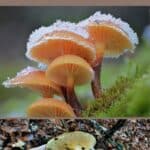
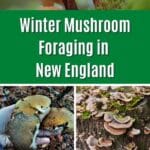
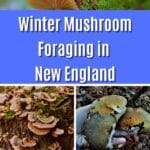

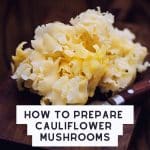
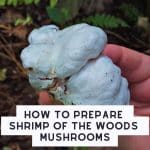
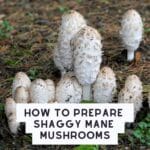
Matt Reynolds says
Hi. I’m trying to ID this.This and the mica caps are the only terrestrial mushies out right now. This didn’t look like your examples. Thanks.
Ps maybe I can send them in a response.
Jenny says
Please share the pics in our facebook group — make sure to read the featured/pinned post so you know what to include for images and info. https://www.facebook.com/groups/340690111324762